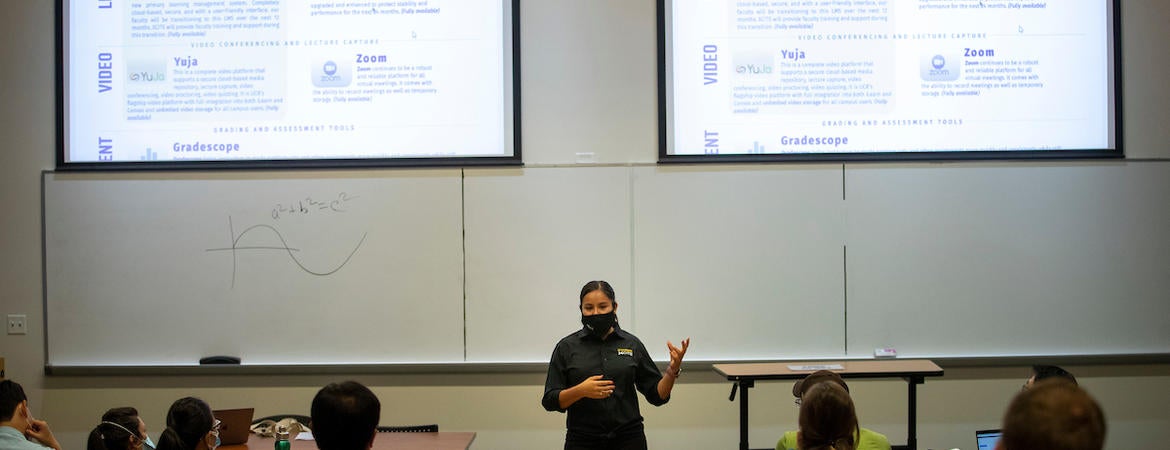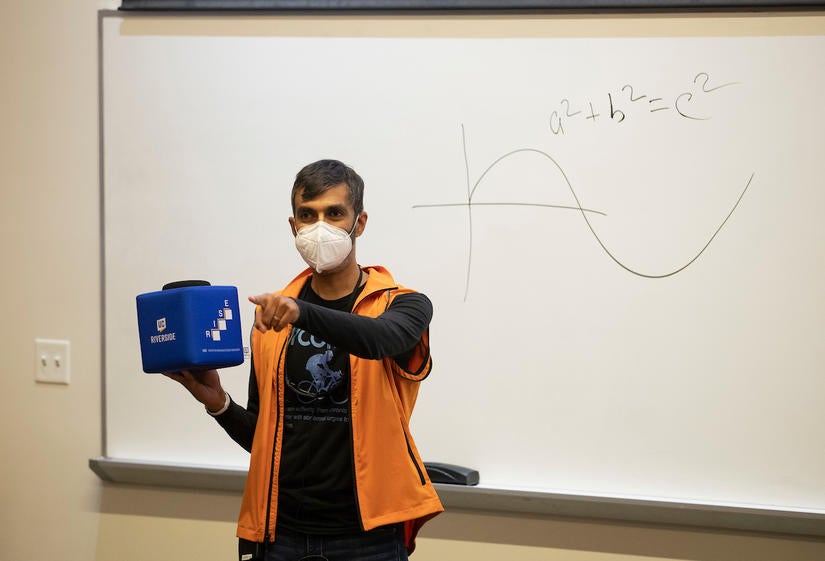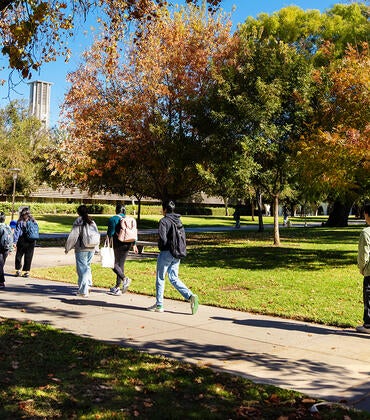
UC Riverside hired nearly 100 student workers to provide support to faculty with new technology in 110 classrooms. These student workers, both graduate and undergraduate, will assist professors in the 110 general assignment classrooms.
The new technology was installed onsite over the summer as part of the Rooms for Increasing Student Engagement, or RISE initiative. RISE is a joint effort by UCR’s Information Technology Solutions, or ITS, and UCR’s Exploration Center for Innovative Teaching & Engagement, or XCITE. The cadre of student workers serves one of two support teams.
The technical support team, led by ITS’s Multimedia and Classroom Technologies Department, consists of 51 undergraduate students — double the number of student workers compared to pre-COVID days. These students are trained by professional IT staff to respond to classroom technology needs, such as broken or unresponsive equipment, or requests for additional equipment. Every classroom is equipped with a help button and telephone; when a faculty member uses it to request immediate technology assistance, a student worker should arrive within 5 minutes.
The new pedagogical support team, led by XCITE, consists of 48 graduate students, known as Instructional Continuity Consultants, or ICCs. ICCs will provide in-class teaching support to faculty interested in using the new technology.
Faculty can request ICC assistance by sending an email to icc@ucr.edu or scanning the QR code located in the classroom. All departments on campus will likely have a designated ICC who is familiar with the courses and instructors since 85% of ICCs are graduate students from the professor’s respective department or college.
XCITE’s and ITS’s cross-organizational teamwork aims to future-proof teaching and learning at UCR by strategically investing in instructional technology infrastructure, said Alexandra Chrystal, ITS communication and training manager.
“RISE is valuable not just for the technology. It’s not just about the teaching; it’s about student and faculty success,” said Richard Edwards, XCITE director. “We want our faculty to be successful and have the support they need. ITS and XCITE have designed the support plans for flexibility. We want to build support to meet them where they are.”
Among other things, RISE technology includes new Dell touch screen computers; Extron touch-control panels; state-of-the-art document cameras; high-definition pan-tilt-zoom cameras — known as PTZ cameras — with preset scene options; and Catchbox microphones, Nerf-like cubes that can be tossed for greater interactive engagement in larger classrooms. Students on Zoom can see into the classroom, and vice versa.
“This is real, true interactivity so that these classrooms are available for remote participation,” Edwards said. “If a student needs to quarantine at home, the student can still connect via Zoom and the rest of the students in the classroom can still be safe.”
These new student worker positions were made possible with funding from the COVID Higher Education Emergency Relief Fund, or HEERF.
“In all cases, ITS and XCITE will be closely coordinating to ensure the support need is routed to the correct team and promptly addressed,” Chrystal said. “Hiring additional students means we are trying to be proactive, to think ahead and be ready to support both faculty and student success as classes resume this fall.”




